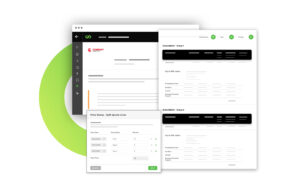Multi Year Deals Don’t Need Spreadsheets—They Need CPQ Price Ramping

Multi-year deals with discounts, promotions, and add-ons can easily become quoting nightmares. Manual spreadsheets create errors and delays. CPQ price ramping automates multi-year pricing logic, enabling faster quotes, cleaner approvals, and scalable deal creativity.
Why Multi-Year Deals Are So Hard to Quote
Big opportunities often come with multi-year complexity:
- Discounted intro pricing in Year 1
- Recovery pricing in Years 2 and 3
- Optional add-ons in the final year
- Promotional rates for the first 30, 60, or 90 days
Trying to model these scenarios manually leads to:
- Line items split across multiple years
- Custom discounts applied inconsistently
- Changing product configurations that break approvals
- Spreadsheets, email threads, and pricing back-and-forth
It’s slow, error-prone, and often requires a spreadsheet and a prayer to get approved.
The Core Problem: Manual Multi-Year Pricing is a Headache
Without automated ramp logic in your CPQ:
- Reps are forced to simulate pricing changes by creating multiple line items
- Approvals require manual checks and recalculations
- Errors creep in with each revision, slowing down deal velocity
- Forecasting and CRM data become inconsistent with what’s actually sold
Manual processes don’t just waste time—they also risk revenue accuracy.
The Fix: CPQ Price Ramp Handles Complexity for You
Price ramping in CPQ allows you to structure creative, multi-year deals without chaos:
- Split a single SKU across yearly, quarterly, or custom time periods
- Apply different prices or discounts for each time segment
- Offer promotional pricing (e.g., first 3 months at X, next 9 months at Y)
- Auto-calculate totals and update approval logic dynamically
- Generate a clean, auditable quote that syncs with CRM and billing
You get the flexibility to win complex deals without the risk of manual errors.
What Sales and Revenue Teams Gain
- Faster quote turnaround for multi-year opportunities
- More pricing flexibility to win deals without losing long-term margin
- Fewer errors and less time spent on revisions or approvals
- Higher close rates by reducing negotiation fatigue and approval delays
Multi-year deals don’t have to be painful—they just need the right CPQ tool.
Manual Multi-Year Quoting vs CPQ Price Ramping
Feature | Manual Multi-Year Pricing | CPQ Price Ramping |
Speed to Quote | Slow, multiple revisions required | Fast, automated, and consistent |
Error Risk | High, dependent on spreadsheets | Low, with rule-driven automation |
Approval Process | Manual and repetitive | Automatic, clean, and audit-ready |
Pricing Flexibility | Limited and hard to track | Flexible and structured |
Forecast Alignment | Inconsistent with reality | Accurate and CRM-synced |
Frequently Asked Questions (FAQs)
What is CPQ price ramping?
It’s a feature that automates multi-year pricing logic, allowing discounts, promotions, and phased pricing without manual work.
Why are manual multi-year quotes risky?
Because multiple line items, spreadsheets, and manual approvals introduce errors, slow deals, and create forecast misalignment.
Can CPQ handle promotional or phased pricing automatically?
Yes. CPQ applies different pricing by period and calculates totals with the correct approval logic.
How does this impact revenue teams?
They get faster deal cycles, cleaner forecasts, and higher confidence in multi-year deal execution.
What’s the ROI of automating multi-year deal pricing?
Shorter sales cycles, fewer errors, more predictable revenue, and higher close rates on enterprise deals.
Related Posts

Price Ramping Maximizes Lifetime Value with Scalable Pricing
Price Ramping Maximizes Lifetime Value with Scalable Pricing Instead of locking customers into flat rates, Price Ramping lets you build subscription contracts that grow over time. By aligning pricing with customer value and usage maturity, you remove friction from deal closure while expanding revenue predictably. This feature is crucial for

Stop Training Reps on Product Rules—Let CPQ Do It For You
Stop Training Reps on Product Rules—Let CPQ Do It For You Reps Shouldn’t Memorize Product Rules—They Should Sell If you’re constantly teaching reps what they can’t quote, you’ve got a tooling issue—not a training one. With CPQ product rule automation, reps quote faster, avoid errors, and learn configurations as they

Renewal Based Upselling Turns Every Contract into a Growth Moment
Renewal Based Upselling Turns Every Contract into a Growth Moment Most SaaS companies treat renewals as a checkbox—but that’s a missed revenue opportunity. Renewal-based upselling embeds upgrade options directly into renewal workflows, driving higher ACV, better customer satisfaction, and faster upsell cycles. The key? Use contextual visibility, pre-built upgrade paths,
Ready to fix leaks, speed up quoting, and unlock hidden revenue?
Use our RoI Calculator to see where your business can grow next.


